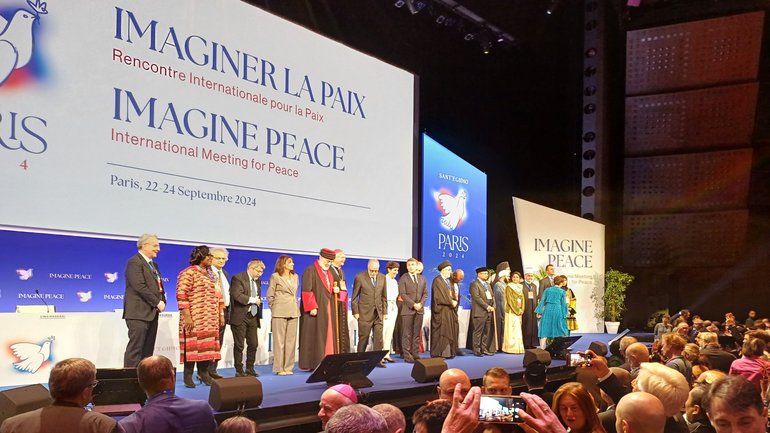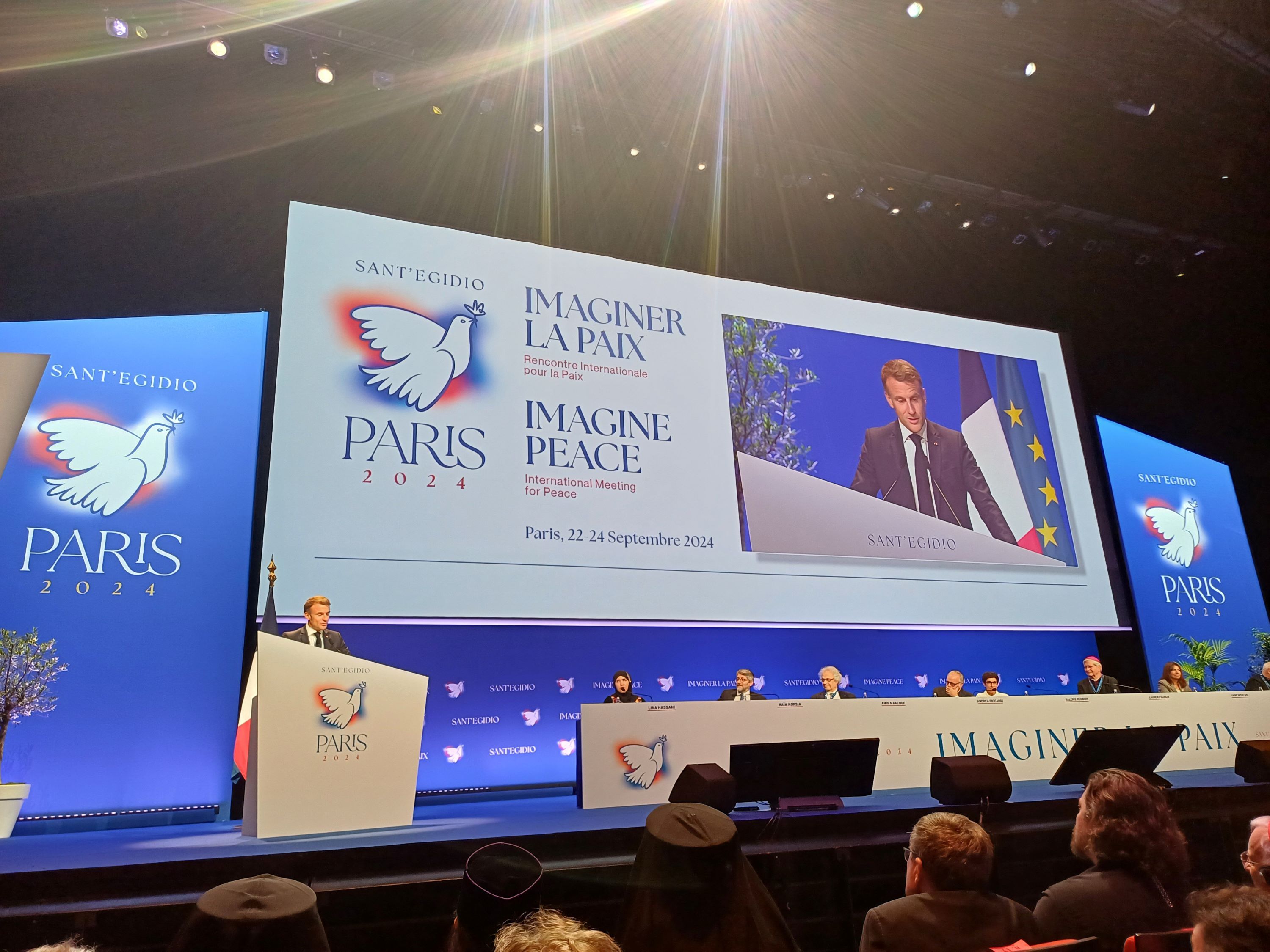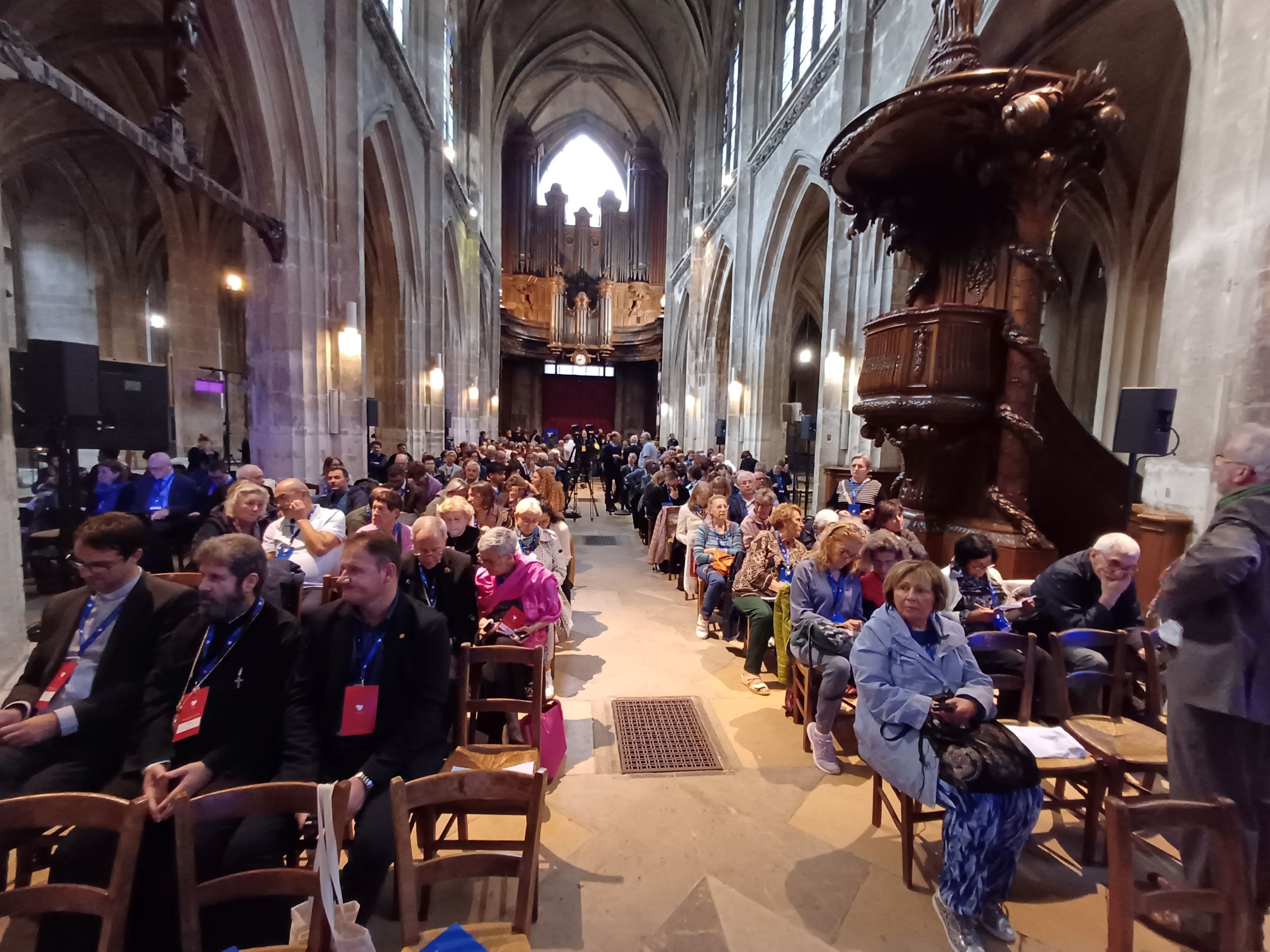To imagine peace or to create the illusion of peacebuilding

The purpose of the meeting, which brought together about three thousand delegates from this Community, prominent representatives of various religions, and civic leaders, was to discuss the promotion of peace in a world where there are currently about 50 larger or smaller military conflicts, including the aggression against Ukraine.
The community of St. Egidio is known worldwide for its humanitarian mission to help the most vulnerable, refugees, and the marginalized. This sincere, dedicated and sacrificial work, or rather service, has spread the idea of the community to 75 countries and now it includes about 150 thousand people, not only of Christian denominations. The mission of the Community of St. Egidio began in Ukraine in 1991. In the time of Russian aggression, they pay special attention to helping internally displaced persons and those in the frontline zone. The amount of aid provided is measured in thousands of tons.
This activity has created a very positive reputation for the Community and respect in both religious and political circles. The International Meeting in Paris was attended by 3 cardinals, more than a dozen bishops of the Catholic Church, including heads of Vatican structures, heads of bishops' conferences, in particular, of Italy and France, ambassadors, government officials from different countries. A special confirmation of the organization's reputational strength and influence was the fact that the opening plenary session was held at the Palais des Congrès in Paris, and one of the keynote speakers on the topic “Imagine Peace” was French President Emmanuel Macron.

Notably, only Emmanuel Macron made a presentation at the opening that was not theoretical but very practical and realistic. The other speakers, including the founder of the Community of St. Egidio, Andrea Ricardi, were using more theoretical and general phrases, ranging from the need to end wars and prohibit the use of weapons in conflicts of various scales to the need to defend human life and care for the most vulnerable (which is obvious in itself), Macron made it very clear that as long as there are countries with nationalist-imperialist ambitions and as long as there are terrorists, the idea of a world without weapons may look somewhat childish. It was Macron who, at the opening, named by name the most threatening wars that have the potential to escalate into World War III: Russian aggression against Ukraine and the war between Israel and the Gaza Strip, provoked by terrorist attacks last October.
I personally had the opportunity to speak at one of the panels, the topic of which was “People's Lives are Wirth less and Less". In my speech, I presented the following thesis: if we want to imagine peace (or, as President Macron aptly said, reinvent peace, dream peace), we must first understand the true nature and cause of Russian aggression against Ukraine. And it is that Moscow seeks to regain the status of a global superpower that it lost after the fall of the Berlin Wall and the collapse of the USSR. Therefore, peace must include stopping Russia's nationalist imperialism, depriving Russia of its military power, helping genuine dissidents and political opposition in Russia, and helping Russia's enslaved peoples make their choice in favor of freedom and free development. And to do this, it may sound paradoxical, and contrary to the abstract and cabinet ideas of some speakers, Ukraine needs more weapons and better weapons than Russia has, in addition to diplomatic efforts.
After my speech, many of the attendees of this panel (which was attended by over 300 people) came up to me and expressed support for my theses. Here I must especially mention that one of the participants came up to me and said directly: “I am a Russian, I fully support Ukraine, I am sorry for what my country is doing to you.” Bishops, priests, and ordinary participants from different countries came up and expressed solidarity.

However, the moderator of the panel commented on my speech as follows: well, if you are looking for peace, you should not present the world in black and white. And this reminded me of a wild expression: it's not all that simple.
And in conclusion, it should be mentioned that in addition to the extremely powerful humanitarian ministry of the Community of St. Egidio, it seeks to work for the search for peace and reconciliation. One of their previously expressed key positions is the need to dialog, negotiate and cease fire, to agree to a mutual truce. Seemingly, the argument sounds good and right, as this way human lives and health can be saved and greater destruction of infrastructure can be avoided. However, such a position shows a lack of understanding of the essence of Russian aggression, and that truce and negotiations will only allow the aggressor to regroup, replenish its arsenal of weapons, and continue its aggression with even greater force. I would not like to believe that they understand this and still offer what they are offering, because then it is a direct play along with Moscow.
Another idea put forward by the Community leadership at the beginning of the war was to declare Kyiv an open city. This means that Ukraine refuses to defend the city in order to prevent siege, storming and bombing of the city and to save civilian lives. The argument, at first glance, looks very attractive and noble. It was also accompanied by an argument about the historical, cultural, and civilizational importance of Kyiv. It is said that without Kyiv, the achievements of Christianity and many other cultural phenomena are impossible, in particular, for Ukraine, Belarus, and Russia (for some reason, this suggests an association with the well-known fake theses about the “three fraternal peoples” or the “ triunity of the Russian people”). Again, the question arises whether the authors of this idea are aware that upon entering a city that does not resist, Russia will immediately put its puppet governor (e.g., Yanukovych or Medvedchuk) in the presidential chair and begin to destroy Ukraine, as described in Timofey Sergeitsev's article in RIA Novosti “What Russia Should Do with Ukraine.” And this article describes who should be liquidated, who should be sent to concentration camps, who should be re-educated, and how the rest should be turned into Russians. I don't know whether the leadership of the Community of St. Egidio understood this when they put forward this idea. But regardless of whether they did or not, this idea is extremely destructive for Ukraine. Although one of the leaders of the Community, who is well informed about the history of Russia, should have been aware of this.
Such ideas put forward by the Community of St. Egidio may have an impact on the position of Pope Francis, who has made Cardinal Zuppi, who is associated with this Community, one of his envoys to Ukraine and Russia. This might be the source of Pope Francis' inconsistent proposals on weapons and the right to a just war or just defense.
And instead of a conclusion. We must present our position on all available platforms, defend our interest before ordinary members of various organizations whose leadership may have a position unfavorable to Ukraine and drop by drop grind away the stone of misunderstanding or the stone of someone else's understanding.
About the author: Dr. Yuriy Pidlisnyy, Patriarchal Commission on Family and Laity of the UGCC









